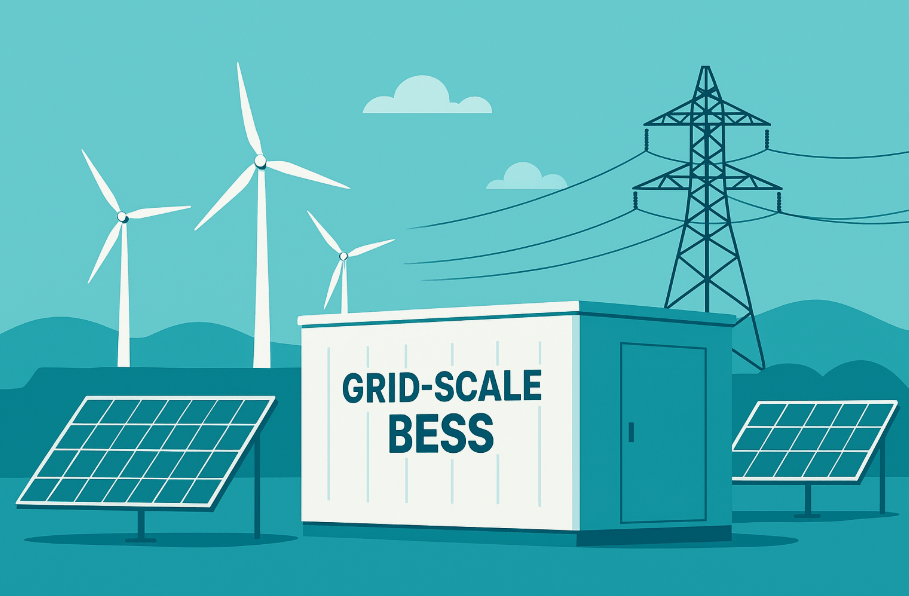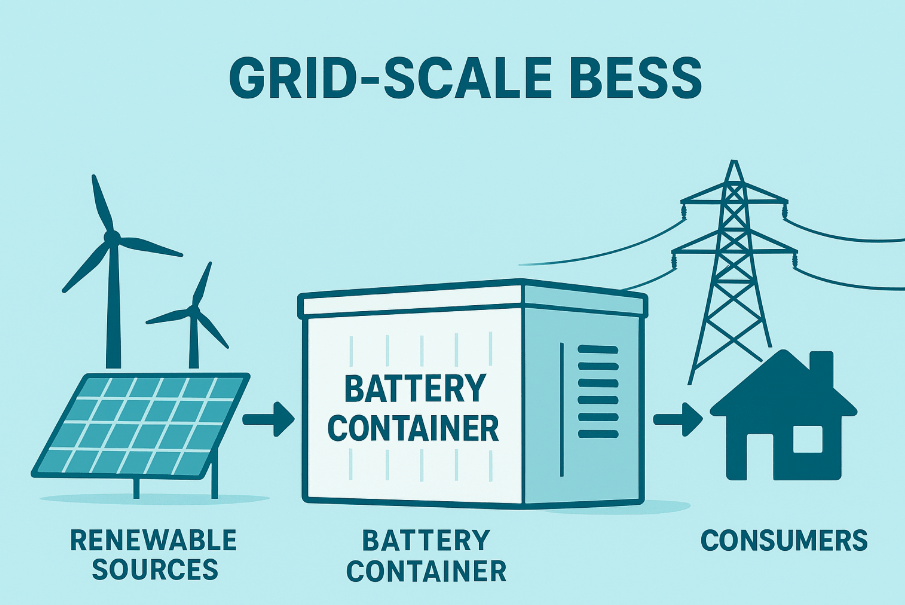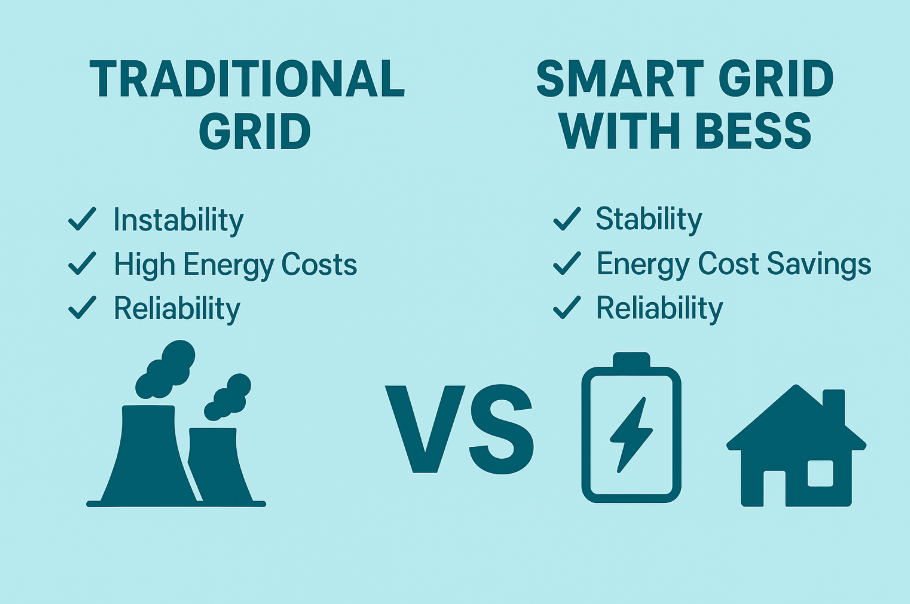Grid-Scale BESS (Battery Energy Storage Systems): The Backbone of the Renewable Energy Future
Grid-Scale BESS (Battery Energy Storage Systems)
 |
| Grid Scale BESS |
As the world accelerates toward renewable energy, Grid-Scale Battery Energy Storage Systems (BESS) are becoming the backbone of modern power networks.
These large battery systems act like giant power banks—storing energy during off-peak hours and supplying it when demand surges.
At SunLith Energy, we design and deliver advanced Grid-Scale BESS solutions that stabilize grids and optimize renewable integration.
What Is a Grid-Scale BESS?
A Grid-Scale Battery Energy Storage System is a large-capacity battery connected directly to the grid. It stores excess electricity from renewable sources like solar or wind and releases it when needed.
Typically ranging from megawatt-hours (MWh) to gigawatt-hours (GWh), grid-scale systems are essential for balancing renewable energy generation.
Read more on UL Certifications for Battery Systems.
Why the Grid Needs Battery Energy Storage
Renewables are clean but intermittent. Without storage, power fluctuations can cause instability or blackouts.
- ⚡ Regulates frequency for steady power
- 🔋 Controls voltage for consistent quality
- 🔄 Balances load between supply and demand
(Reference: International Energy Agency – Energy Storage)
How BESS Powers Renewable Integration
Grid-scale storage bridges the gap between variable renewable generation and consistent energy demand. When solar production drops or wind slows, stored energy ensures continuous power supply.
Benefits include:
- Higher renewable utilization
- Reduced curtailment losses
- Faster grid response
- Lower fossil fuel dependency
See more at Solar + BESS Integration.
Peak Shaving and Energy Cost Optimization
Electricity costs spike during high-demand hours. Grid-Scale BESS discharges stored power during peaks and recharges off-peak — a process known as peak shaving.
This saves money, reduces stress on infrastructure, and delays costly grid expansions.
Explore more in Peak Shaving Energy Costs.
Ancillary Services and New Revenue Opportunities
Grid-scale BESS supports multiple revenue streams while improving reliability:
- ⚙️ Black start capability – restoring power post-outage
- 📊 Load following – tracking real-time demand
- 🧩 Spinning reserve – instant backup support
Learn more about BESS Energy Management Systems (EMS).
Long-Duration Storage: Extending Grid Reliability
Most lithium-ion systems provide 2–4 hours of backup. Emerging technologies like flow batteries and iron-air systems now offer 8–24 hours, enabling true 24/7 renewable reliability.
(Reference: U.S. DOE – Long Duration Energy Storage)
Global Growth and Market Trends
The global BESS market is expanding rapidly, with a 25% CAGR through 2030 (NREL Research).
Countries like the U.S., Australia, China, and the U.K. are deploying large-scale storage to modernize their grids — marking the shift from pilot projects to mainstream infrastructure.
Economic and Policy Drivers
While upfront investment is high, long-term returns are strong. Governments encourage BESS adoption through:
- Tax credits and energy incentives
- Renewable portfolio standards
- Market reforms for grid participation
Explore Commercial & Industrial BESS Solutions.
Challenges and How SunLith Energy Solves Them
Key challenges like CAPEX, regulation, and supply chain complexity are addressed through innovation. At SunLith Energy, we ensure:
- ✔️ UL-certified system safety
- ✔️ Advanced thermal design
- ✔️ Lifecycle recycling and sustainability
BESS in Microgrids and Distributed Energy Systems
BESS enhances energy independence for microgrids and local networks. In remote areas, it pairs with solar or wind for continuous power and resilience.
Compare systems in C&I BESS vs Residential ESS.
Conclusion: The Smart Grid Needs Smart Storage
The clean energy transition depends on intelligent storage. Grid-Scale BESS balances supply and demand, stabilizes frequency, and supports renewable adoption.
With proven expertise, SunLith Energy empowers developers and utilities to build resilient, zero-carbon energy systems for a sustainable future.
FAQs
1. What is a Grid-Scale BESS?
A large-capacity battery that stores grid electricity and releases it on demand.
2. How does it help renewables?
It stores excess solar or wind energy and supplies it when production drops.
3. What services does BESS provide?
Frequency regulation, peak shaving, load balancing, and voltage control.
4. How long can it store energy?
Standard systems last 2–4 hours; next-gen batteries up to 24 hours.
5. Why choose SunLith Energy?
We offer UL-certified, end-to-end BESS solutions for grid-scale reliability.



Tags: Grid-Scale BESS, Battery Energy Storage, Renewable Energy, Smart Grid, SunLith Energy


Comments
Post a Comment